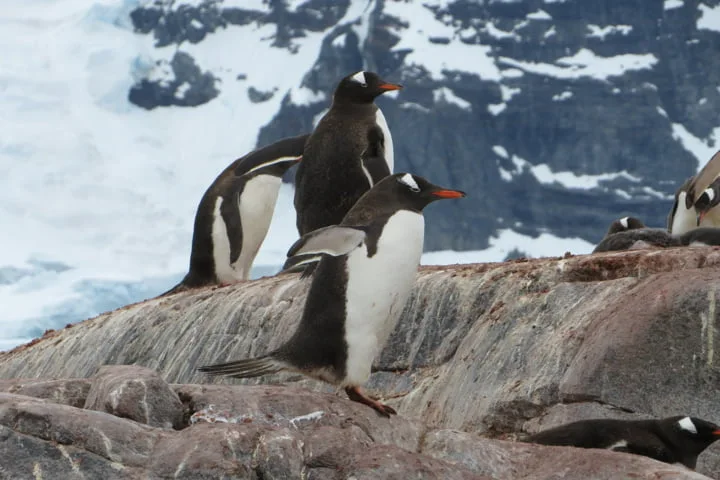New York’s Stony Brook University (SBU) team of researchers were in for a surprise when they spotted gentoo penguin colonies on Andersson Island of Antarctica and also on an archipelago which has remained unexplored and is located off the Antarctica Peninsula’s northern point.
According to a report in smithsonianmag.com, these places are some of the southern-most for gentoo breeding.
Interestingly, gentoo penguins favour places that are warmer to raise their offspring and till recently found these regions too icy for their choice. That doesn’t seem so now as change in climate is helping them to expand their habitat – “gentoofication” as some scientists refer to it as.
Talking to Mongabay, Heather Lynch, said: “It’s may be a cliché at this point, but they’re the canary in the coal mine for climate change because they’re so closely tied to those sea ice conditions.”
Lynch was the leader of the SBU expedition that sailed with Greenpeace to count the penguin colonies in eastern Antarctica Peninsula remote islands and is also an Antarctic penguin expert at the University.
The team discovered 75 chicks living on Andersson Island while they were looking for penguin colonies spotted by satellite in parts that hadn’t been explored before on foot.
Sharing his experience Lynch said: "As expected, we're finding gentoo penguins nearly everywhere we look — more evidence that climate change is drastically changing the mix of species here on the Antarctic Peninsula.”
This species of penguins are the only ones whose distribution and numbers are going up along the Antarctica Peninsula, as per Oceanwide Expeditions website.
Also read: Killer whales can hunt for longer as Arctic ice melts
In a statement Louisa Casson, a member of Greenpeace’s Protect the Oceans campaign who was part of the team said: “This is the climate crisis happening right in front of our eyes. In the Antarctic, one of the most remote places on Earth, we are seeing a process where this species of penguin is spreading into new habitat and breeding further south: a biological manifestation of sea ice loss.”
Antarctic Peninsula temperatures have been going up and the year 2020 witnessed the continent hitting a record high 64.9 degrees Fahrenheit. This has helped the gentoos but not the Adelie penguins who are dependent on sea ice.
Expressing her views on this to the media, Michael Wethington who is a quantitative ecologist at SBU said: “When we find Adélie penguins, we typically know that sea ice is nearby. And whenever we’ve seen sea ice declining or disappearing altogether, then we’re seeing corresponding Adelie penguin populations decline substantially.”
Also read: Albatross couples could be separated by Climate Change
The heartening news for the expedition was that in Weddell Sea the number of Adélie penguin have remained steady in the last 10 years. This is the area where the proposed Marine Protected Area is planned.
Airing his thoughts on this Lynch in the statement said: “The Weddell Sea is hardly immune from climate change, but it appears that Adélie penguins breeding in this area remain buffered from the worst of the threats posed to those populations declining so rapidly on the warming western side of the Antarctic Peninsula. Our understanding of the biology in this inhospitable landscape continues to grow every year, but everything we learn points toward its value for conservation.”




















